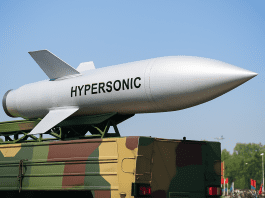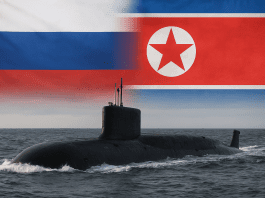Military authorities reported that they found suspected missile debris in the eastern Lublin region of Poland. Authorities believe the debris shot down a drone. They discovered the fragments more than a week after Poland, with support from NATO jets, successfully intercepted Russian drones that entered its airspace.
Discovery of Missile Debris in Lublin
The Lublin branch of the military police confirmed that the missile debris would undergo a detailed forensic inspection. Authorities scheduled the examination for Thursday. They stressed that the debris appears connected to recent airspace security incidents, although investigators are still working to identify the exact origin of the missile debris.
The discovery of missile debris has raised concerns among local authorities and residents. Officials located the fragments in an area used for farming and residential purposes. As a precaution, authorities secured the site to protect public safety and preserve the missile debris for forensic studies. Specialists will examine the debris for identifying markers, serial numbers, and any components that could reveal its origin.
Poland did it with Russia in mind—now Israel eyes similar F-16V upgrade path
Officials have highlighted that discovering missile debris is not uncommon following airspace defense operations. Still, each piece provides critical information about the type of weapon used and the effectiveness of interception systems. Authorities have urged residents not to touch or move the missile debris, as it could pose safety risks.
Background on Airspace Incidents and Missile Debris
Poland has experienced repeated airspace violations in recent weeks. Last week, authorities detected Russian drones crossing into Polish territory overnight from Tuesday to Wednesday. These incursions coincided with ongoing military operations in Ukraine, where the conflict has been active since February 2022.
In response, Poland, supported by NATO aircraft, acted quickly to neutralize the drones. Officials believe the debris recovered in Lublin is connected to these defensive actions. They confirmed that the drones were intercepted successfully, preventing potential damage to Polish territory. Russian authorities stated that their military operations focused solely on Ukraine and denied targeting Poland.
🧳 From Libya to Poland — Belarus accused of trafficking migrants in geo-political power play
Authorities consider the discovery of debris in Lublin part of the larger context of airspace security. Military police are investigating whether Poland’s defensive missile systems produced the debris or if it came from other sources. Forensic experts will analyze the debris for metal composition, serial numbers, and other structural features to determine its origin.
Experts say analyzing debris plays an essential role in understanding the types of weapons involved and the performance of air defense systems. Each fragment can reveal details about trajectory, impact points, and potential risks to nearby communities. Investigators aim to document all evidence accurately and provide a complete understanding of the incident.
Security Measures and Investigations
Following the discovery of debris, authorities have implemented strict safety measures. The area around the debris site has been cordoned off, and access is restricted to military police and forensic specialists. Local residents have been advised to avoid the area until investigations are completed.
The military police will conduct a thorough forensic investigation on Thursday. The process will involve detailed examination of the debris to determine its type, origin, and possible link to the drone interception. Experts will study structural components, explosive residues, and other technical features to determine whether the missile debris is part of Poland’s air defense system or from another source.
Russian drone prowls Romanian skies for 50 minutes as Poland sees dangerous pattern of provocation
No injuries or damage related to the debris have been reported. Authorities have emphasized that the discovery is part of routine investigation procedures following airspace security incidents. Polish military officials are coordinating with NATO partners to ensure that all findings regarding missile debris are shared within the alliance, reflecting the international significance of the airspace violations.
The incident underscores the challenges faced by countries in protecting their airspace. The discovery and investigation of missile debris provide valuable information for defense planning, safety measures, and public awareness. Poland’s prompt response, alongside NATO support, demonstrates the coordinated efforts to manage threats and handle missile debris safely.







